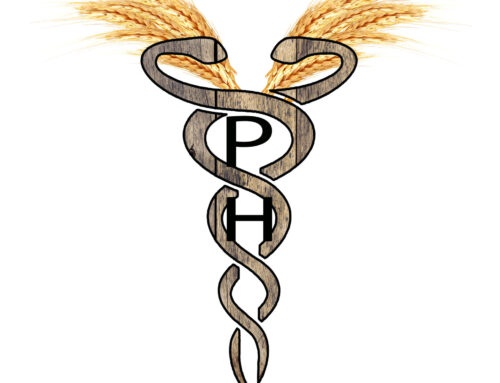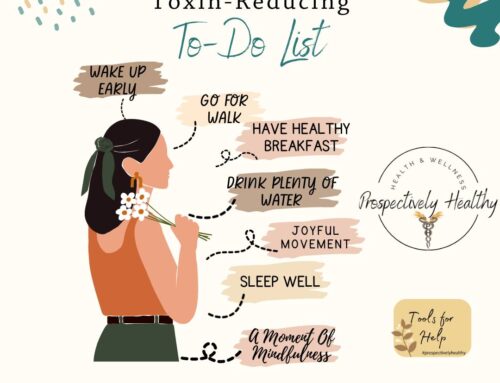If you think blood sugar problems are reserved for those with diabetes or its cousin, Metabolic Syndrome X – think again. The truth is that we are all constantly managing blood sugar swings.
Your blood sugar is controlled by two main hormones: cortisol and insulin (glucagon and epinephrine also play a role). Cortisol’s main job is to get blood sugar up by pulling from your fuel reserves. Insulin’s main job is to lower it back down after cortisol has kicked in or after you eat.
Why does this matter? Controlled blood sugar helps you keep your brain and blood vessels healthy, your energy levels and mood balanced. Controlled blood sugar also wards off stress on both the cortisol and insulin systems — which when taxed over time will lead to bigger health problems.
What Does This Mean for Fat Loss? Whether you’ve skipped a meal, you’ve gone several hours without eating, or you’re feeling really stressed out – your blood sugar will rise thanks to the stress hormones cortisol and adrenaline. They pull from stored sugar (called glycogen) and also from fat stores. And if you’re really stressed out, they will pull from protein stores – better known as lean muscle mass.
Now insulin comes into play. Whether your blood sugar rises due to stress hormones or because you just ate a meal, insulin is released in order to get liberated sugar into your cells. This is what’s supposed to happen, but many of us are insulin resistant and we need more insulin to get the job done. We can eat our way into this with a bad diet, or we can stress our way into it by skipping meals or living a stressful lifestyle.
More insulin around more often means more fat storage – and, of course, a difficult time losing the fat you already have.
There are a lot of hormones involved in losing fat, and they are all pretty fancy sounding such as testosterone, growth hormone, leptin, etc. As boring as it may sound, focusing just on cortisol and insulin sets many of these other hormones right. Balance your blood sugar, and you’ll have more even energy, better workouts, better sleep and easier fat loss.
How to Determine if Your Blood Sugar Is Swinging? Common blood tests from your doctor give insight as to how well the relationship between cortisol and insulin is working, but on an hour-to-hour basis your symptoms can tell you quite a bit. Here are a few things that might alert you that something could be a little off. (NOTE: Always remember to consult with your doctor.)
If your blood sugar is rising too much after meals you’ll notice: – Fatigue after eating – Craving sugar or carbs after eating (craving not relieved by eating them) – Difficulty losing weight – Increased thirst and excessive urination
If your blood sugar is dipping too low between meals you’ll notice: – Fatigue between meals (that is relieved by eating) – Feeling irritable, shaky or light-headed – Sugar or starch cravings – Difficulty staying asleep
How to Keep Your Blood Sugar Even Throughout the Day? 1. Eat every three to four hours. Meal frequency is highly individual. You need to find the interval that keeps your energy and appetite even and still gets you fat loss results. Start with 4 meals and add or take away one as you adjust protein, fiber (a.k.a. veggies and lower sugar fruits such as apple or berries) and starchy carbs.
2. Balance meals with protein and lots of veggies containing fiber such as greens, bell peppers, cucumbers and asparagus.
3. Avoid sugar and simple carbs such as breads, pastas, white rice, crackers, pastries, etc. And especially don’t eat these types of foods without consuming protein or fiber with them.
4. Do not let yourself get irritable, lightheaded or shaky between meals. Be prepared with protein-based snacks such as hard boiled eggs, or healthy fat-based snacks including nuts so that you aren’t relying on simple carb snacks like energy bars or pastries.
5. Avoid getting sleepy or having cravings after eating by adjusting your intake of starchy carbs such as whole grains, beans, legumes, potato, sweet potato, pumpkin and other squash, as well as fruit. The correct range is anywhere from four-to-14 bites or ¼ to ¾ cup (use whatever system works best for you to measure) for most people trying to lose fat. You need to find your unique carb tolerance that keeps your energy up between meals up but does not leave you sleepy or craving after eating. Start in the middle (for example eight bites), and experiment until you know what works for you. Use sleepiness and cravings for sugar or starch after eating as your guide and lower your carbs as needed.
-Brooke
Dr Brooke Kalanick, ND, MS, LAc is a naturopathic doctor and graduate of Bastyr University – the leader in natural medicine education, research and the training of holistically minded primary care providers. Dr Brooke specializes in PCOS and Hashimoto’s hypothyroidism helping these fat loss resistant women feel, look and be better. Her knowledge of both conventional and alternative medicine helps her give patients back the control of their body, their hormones and their life. As a woman and mother who shares these struggles, she helps the women she works with live the adage: between perfect and giving up, there’s better.
Dr Brooke shares strategies with you for being better on Facebook, Twitter, Google+ and Pinterest.
Read more: http://www.livestrong.com/blog/why-blood-sugar-matters-for-fat-loss#ixzz2UiARGUjd




